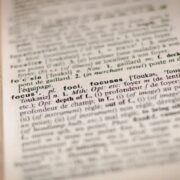You would be surprised to learn how much an understanding of, and an ability to analyze, data and statistics can boost you career in the healthcare industry. In recent years, statistics has gradually become an essential element of the nursing profession. Keep reading to find out some of the uses of statistical knowledge in nursing.
Table of Contents
Nursing research
In any professional field, research is fundamental to advancing and refining practices. In that light, nursing research is crucial for revolutionizing healthcare. Research can take place in different settings – in clinics, universities or in the community. This research helps generate new knowledge, inform policies in nursing practice and validate existing knowledge. Statistical knowledge comes in handy in various ways.
One of those ways is study design. Statistical knowledge is vital in designing nursing research studies. For instance, a good researcher needs to determine the correct sample size and select the appropriate sampling techniques. That way, the results can be valid and reliable.
Statistical knowledge also comes in handy with data collection and analysis. A nursing researcher applies statistical principles to collect, organize and summarize data, which sets the foundation for meaningful interpretation. Common analysis techniques include regression analysis, descriptive statistics such as mean, and qualitative data analysis techniques. Once the researcher has analyzed the data, they will need statistical knowledge to interpret it. Again, the researcher needs statistical knowledge to identify patterns and relationships in the data.
Statistical methods also help nurses assess the validity and reliability of research findings. Validity is the truthfulness of the results, while reliability is the consistency of the findings over time. Therefore, nursing researchers can determine whether the findings can be generalized to other populations. Once they have verified these findings, they can guide the development of clinical guidelines, protocols and standards of care and help improve patient care outcomes. The research can also serve as a foundation for nursing education and on courses like the direct entry master’s of nursing program offered by Elmhurst University, as it helps shape the curriculum and teaching strategies.
Clinical practice
Statistics is a fundamental part of clinical practice in nursing to improve patient care. Even at initial contact with patients, nurses use statistical methods to assess a patient’s status. They capture statistics such as weight and height to identify health risks. They also use statistical knowledge to interpret laboratory results or standardized tools such as pain scales to assess patients. The nurse can use this data to identify trends and abnormalities, thus informing the treatment plan.
A nurse also applies statistical knowledge to interpret research findings and evidence-based practice recommendations to make decisions. For instance, a nurse will use statistical techniques to weigh the strength of particular evidence, evaluating the risks and benefits of different treatment options while considering a patient’s preferences.
Statistical knowledge is also seen in play when administering medication. For instance, a nurse will use statistics to determine infusion rates and medication dosages. The nurse might even have to do mathematical calculations based on patient characteristics such as age and renal function. Such a level of accuracy is crucial to ensure patient safety.
As nursing is a continuous improvement profession, nurses can use statistics to know what works and what could improve. For instance, nursing professionals can look at data such as infection rates and medication errors. They can use the findings to identify areas of improvement or measure the impact of quality improvement. This also means that nursing leaders can evaluate nursing interventions by comparing outcomes in different groups using statistical techniques to analyze the quality of life.
Statistical knowledge is also applicable to patient education. A nurse can refer to statistical data to educate patients and their loved ones about treatment options and outcomes they can expect. For instance, they can explain the probability of specific side effects. Patients can then use this data to make informed decisions about their healthcare. Nurses must find ways to break down complex concepts for patients and ensure that they are empowered when making decisions.
Quality improvement
Statistics plays a critical role in quality improvement by providing a framework for identifying and addressing patient care, safety and satisfaction issues. One of the ways that statistics help with quality improvement is through data collection. Nurses can collect data such as the patient outcome and adherence to clinical guidelines. They can then analyze this data using statistical methods to identify areas of low performance and variations in practice.
Statistics also help nurses monitor performance indicators that can be used to benchmark against established standards or best practices. That way, nurses can determine if the care provided meets the set standards. If the care is substandard, it becomes a wake-up call to dig deeper to establish the root cause. For instance, the substandard care may be due to understaffing. Therefore, the leadership can fill the gaps and provide more resources to take the level of care a notch higher.
Statistical methods used in nursing
Now that we have seen the various uses of statistical knowledge in nursing, let’s look at some of the popular statistical methods and their applications.
Descriptive statistics
Descriptive statistics are used to describe data. There are four major categories of descriptive statistics. These are measures of frequency, central tendency, dispersion or variation, and position. In a healthcare setting, a nurse can access various statistics for a patient, such as the mean weight of the patient during a given time interval or the percentile of their heart rate. These metrics help the nurse understand the patient’s health status. For instance, if a patient is in the 93rd percentile of weight for their age group, it could be an indication that they are not at a healthy weight. Therefore, the nurse can recommend a lifestyle change to the patient.
Inferential statistics
Applying findings to contexts outside the current observation is the focus of inferential statistics. Determine correlations between variables of interest in nursing by using inferential statistics. Creating a null hypothesis and an alternative hypothesis is typically the first step. The former assumes that there is no noteworthy difference or relationship, while the alternative hypothesis suggests that there is a significant difference or relationship. Tests such as analysis of variance (ANOVA) and regression analysis are used to compare the observed data to the expected data to see if the null hypothesis can be rejected or not.
Nursing professionals also use confidence intervals to estimate a range in which they might expect test results to fall within. For instance, an 80% confidence interval for the mean blood pressure for a population would suggest that the actual population mean falls within the calculated interval with 80% confidence.
Another vital aspect of inferential statistics in nursing is sample size determination. It is essential to determine the appropriate sample size to achieve the desired level of statistical power. When the sample size is too small, it can be hard to decide on a true effect. As inferential statistical methods work with assumptions for the most part, it is crucial for nurses to check for the validity of the assumptions before applying them to data.
Multivariate analysis
Multivariate analysis is a statistical method that involves the simultaneous analysis of multiple variables in a data set. This method takes into account the interdependencies of two or more variables. Therefore, it becomes possible to explore complex patterns and interactions among variables. Let’s bring that concept closer to nursing research. A method such as multivariate regression analysis can be used to explore the relationship between multiple risk factors and assess the effectiveness of interventions. Another common multivariate analysis method is the multivariate analysis of variance (MANOVA). This method can be applied in nursing research to examine the difference among multiple dependent variables. Cluster analysis can also be used to group cases into meaningful subgroups based on their similarities or differences.
Survival analysis
Survival analysis refers to a branch of statistics that deals with analyzing the expected duration of time until one event occurs. This method can be used to predict how long a patient’s hospital stay will be. There are various survival analysis methods, such as Kaplan-Meier survival analysis and Cox proportional hazards models.
The use of statistics software in nursing
Technology has tremendously revolutionized the healthcare sector. Besides the invention of state-of-the-art medical equipment, there has also been the integration of software in various fronts of the nursing profession. A good example is statistics software. There are a number of software solutions that help nurses with statistics-related tasks, such as data analysis and presentation. Below are some of these.
Microsoft Excel
Although Microsoft Excel is not considered statistical software, it has all kinds of numerical applications. Nurses can use this application to understand statistical concepts. It is also a good tool for data summary and presentation. It is easy to create data visualizations with charts. You can also print the reports easily, and there are numerous templates available. Another advantage is that Microsoft Excel is available online, making it safe to store and access data from anywhere.
STATA
STATA is a statistical software known for a wide range of capabilities that apply to nursing research. It comes in handy for data analysis and statistical analysis. One of the ways that nursing researchers can use STATA is by performing descriptive statistical analyses, such as measuring dispersion for continuous variables. STATA can also be used for inferential statistics, such as survival analysis, t-tests and chi-squared tests.
STATA has a wide range of graphical visualization options, including bar charts, line charts and scatter plots. It can also generate tables and figures that can be used in research reports and publications. Other uses of STATA include statistical modeling and data management.
SAS
SAS is a comprehensive statistical software with many data analysis and nursing research applications. To begin with, SAS has robust data management capabilities. A researcher can therefore use it to clean, transform and manipulate data. For instance, a nurse can perform data merging and data validation. They can also create new variables. It also has other capabilities, such as reporting, presentation and statistical modeling.
Statistical Package for the Social Sciences (SPSS)
SPSS is another popular statistical software that allows nurses to perform various analyses, such as regression analysis, inferential statistics and descriptive statistics.
R programming language
Would you like to take your data analysis to the next level? You can do so by using R, a popular open-source programming language and environment for statistical computing. It comes in handy for tasks such as statistical modeling and visualization. Although it might be a steep learning curve, it is an incredibly powerful tool. There is a large and active community of users and developers from all over the world who can help you in your journey.
How to improve your statistics skills as a nurse
The most prominent role of a nurse is to provide care to patients. However, we have just reviewed how statistics are also essential to this profession. While you will learn basic statistical skills, you might need to put in some effort outside of the classroom to improve these skills. One of the biggest secrets to improving any skill is practice.
You can also improve your skills by helping others solve their statistical problems. Is there a colleague conducting some research? If so, you can share your knowledge with them, and you will improve their skills during that process. Remember not to memorize the statistical formulas. If you do this, you will end up forgetting – instead, try to understand and remember the concepts.
Most importantly, leverage the power of the internet. Nowadays, you can find help from online tutors, sometimes without having to pay.




















Comments